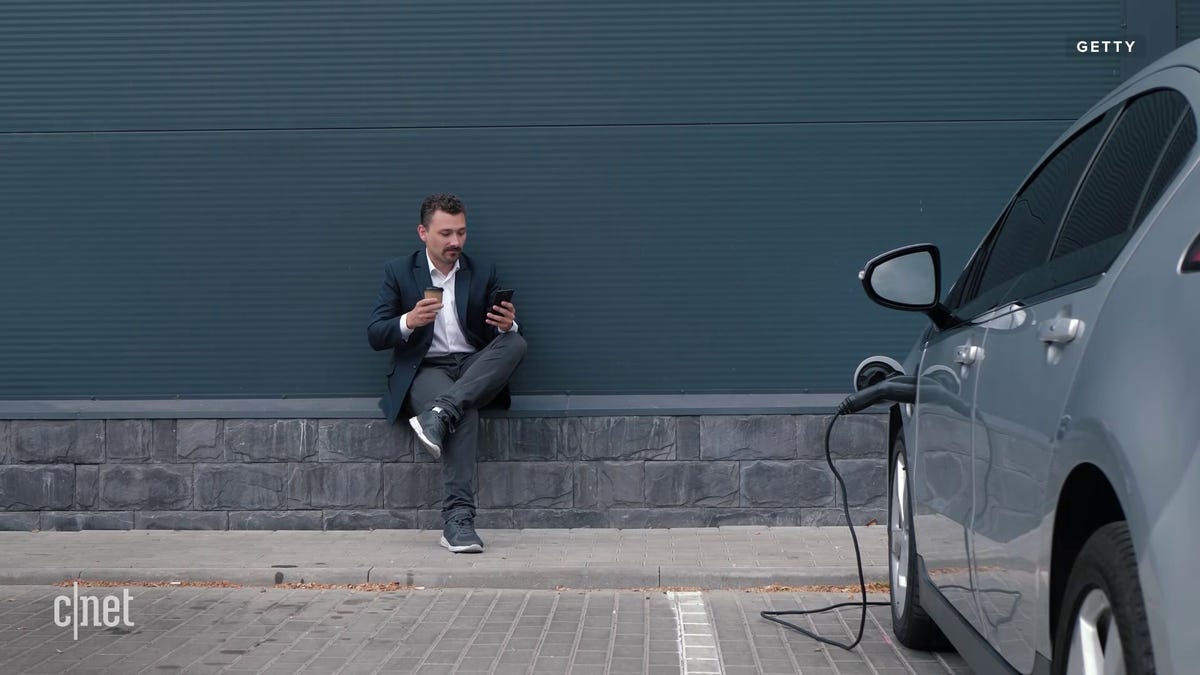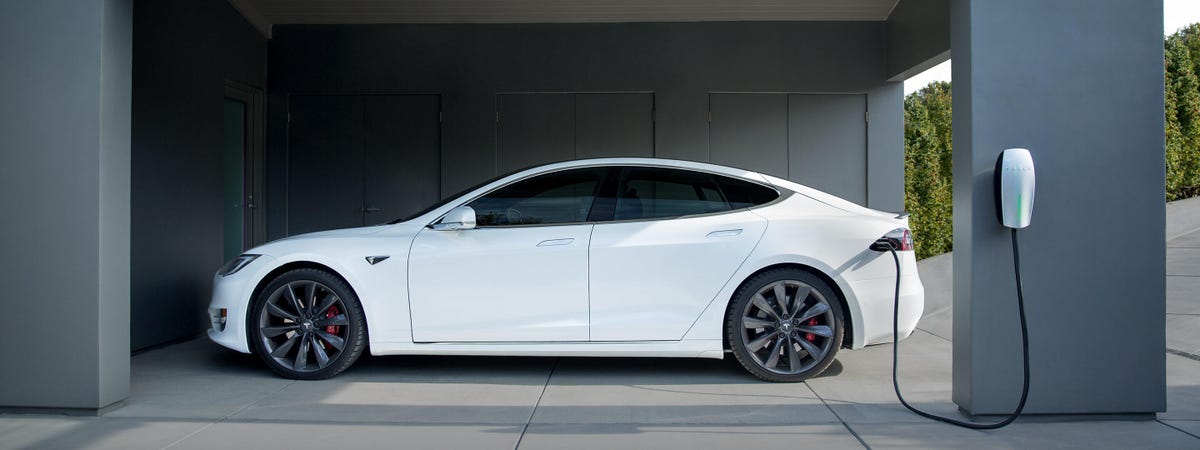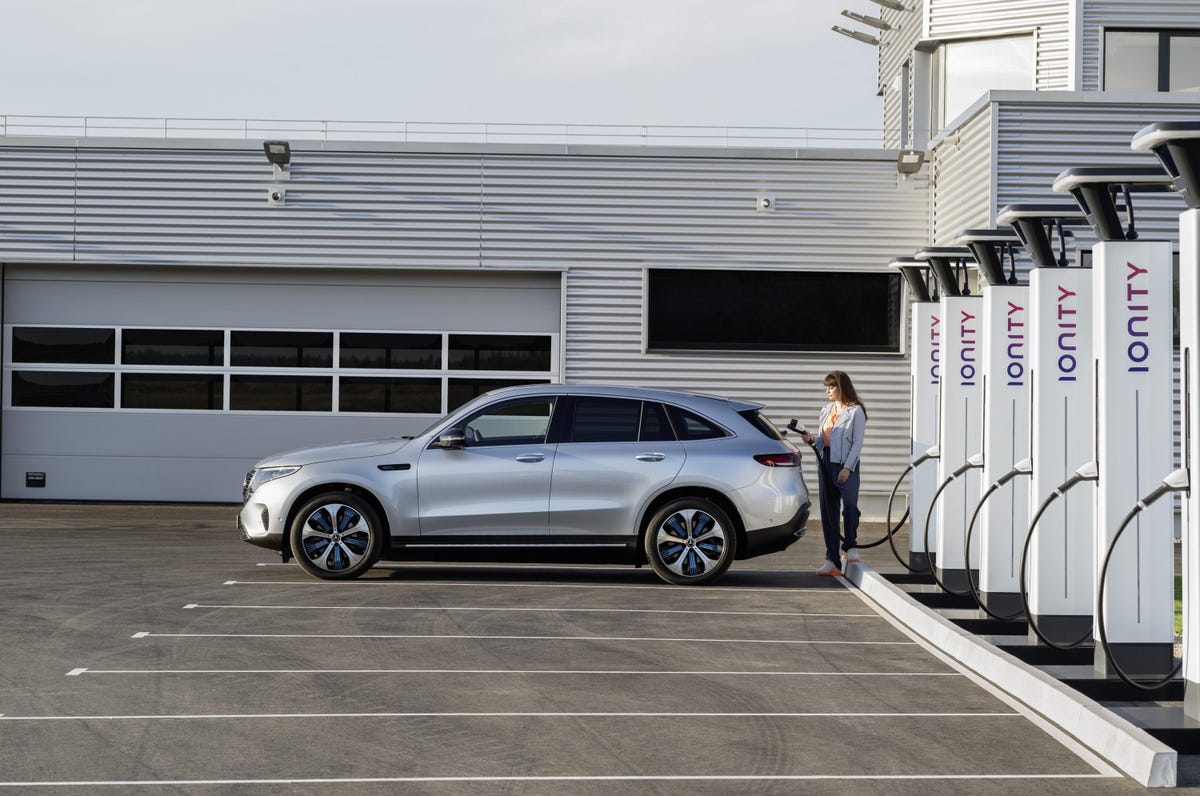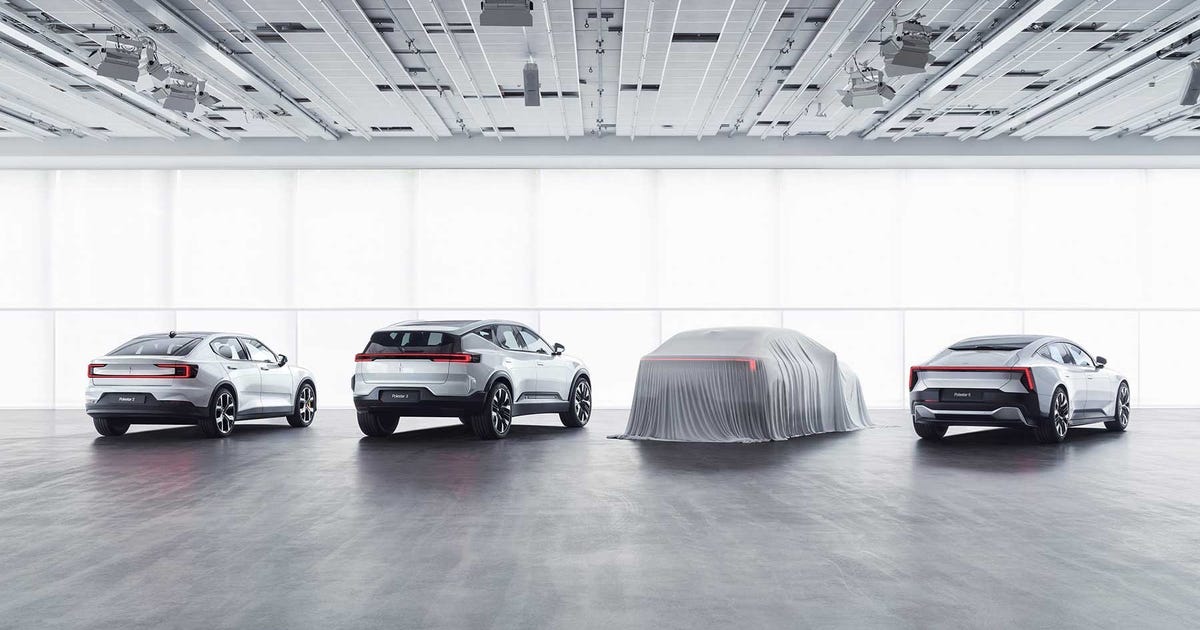This story is part of Plugged In, CNET’s hub for all things EV and the future of electrified mobility. From vehicle reviews to helpful hints and the latest industry news, we’ve got you covered.
If you have an EV or have ever shopped for one, you know the mantra that carmakers preach: Install an affordable Level 2 charge connector at your house and plug in overnight for ample miles of blissful clean range. But what if that’s just the selfish way? A new study out of Stanford University paints a more nuanced picture that urges greater use of daytime charging away from the suburban driveway.

Charging away from home may engender a new mindset for EV intenders, but it’s still early enough in the history of electric cars to establish the best norms.
Getty Images
The paper recommends daytime charging at workplace or public locations when power from solar is at its most plentiful and when the grid is less taxed than in the late afternoon or early evening. “In our results that was much better for the grid at the generation level in every different metric that we considered,” says Siobhan Powell, lead author of the study, which looked at scenarios in the 14-state Western Interconnection region of the US grid.
The benefits of the Stanford recommendation extend not only to avoiding grid collapse but also to charging EVs when the cleanest power is available with less reliance on expensive battery storage. This “make hay while the sun shines” model would be something of an about-face for traditional utility and Department of Energy charging dogma that urges charging overnight when demand is low, though solar output is nonexistent, a recommendation that dates back to a time when solar and wind power generation were still in their nascency.


Charging overnight at home (usually in a garage from the pages of Dwell) is typically suggested by carmakers as nirvana for the owner, but it may not be the best for the grid.
Tesla
“At Stanford we work closely with a lot of utilities and this is one of their big concerns: What will charging do to their networks?” says Powell. The answer would seem to be nothing good, based a recent moment: On Aug. 25 California decided to ban the sale of new combustion cars by 2035; 13 days later a heatwave resulted in temporary signs on some California EV charging stations asking drivers to avoid using them between 4 p.m. and 9 p.m.
But Powell says that irony “also highlighted one of the upsides of EV charging, that it’s very flexible compared to other electric demand.” Most of us don’t have a choice of when we need air conditioning or when we need to cook dinner, but cars sit idle for the vast majority of their lives, allowing for highly flexible charging as long as a savvy owner or a smart grid embraces it.
Daytime charging at work or in public locations also helps answer what is the least inconvenient truth about EVs: Over 30% of US households are in multifamily buildings where residents probably don’t have their own garage or driveway in which to install a private charging device.


If only there were this many open chargers awaiting you at the average workplace.
Daimler AG
One caveat to the study is that it was based on pre-COVID data, leaving open questions about how the return to office will settle out and what it means to the potential scale of at-work charging. But even if some offices remain sparsely attended, with a majority of EVs charging at home, the Stanford team says smart charging, where cars and the grid do an intelligent handshake, can ensure that cars charge at the cleanest time and not all at the same time.
You may have noticed that many public or workplace charging locations share a major flaw: There are too few of them and too many are tethered to cars that are fully charged but waiting for the return of a driver who is busy working or shopping. Short of some convoluted robotic charge tender that even Elon Musk has given up on, the answer seems to be ubiquitous charging where virtually any place you can park a car you can charge it. That’s a massive undertaking the likes of which this country hasn’t seen since the electrification of US homes a century ago. But public investment is building to bolster a vast infrastructure project where the business case for installing charge locations (PDF) is seen as challenging.
Find the right car for you
View Local Inventory




